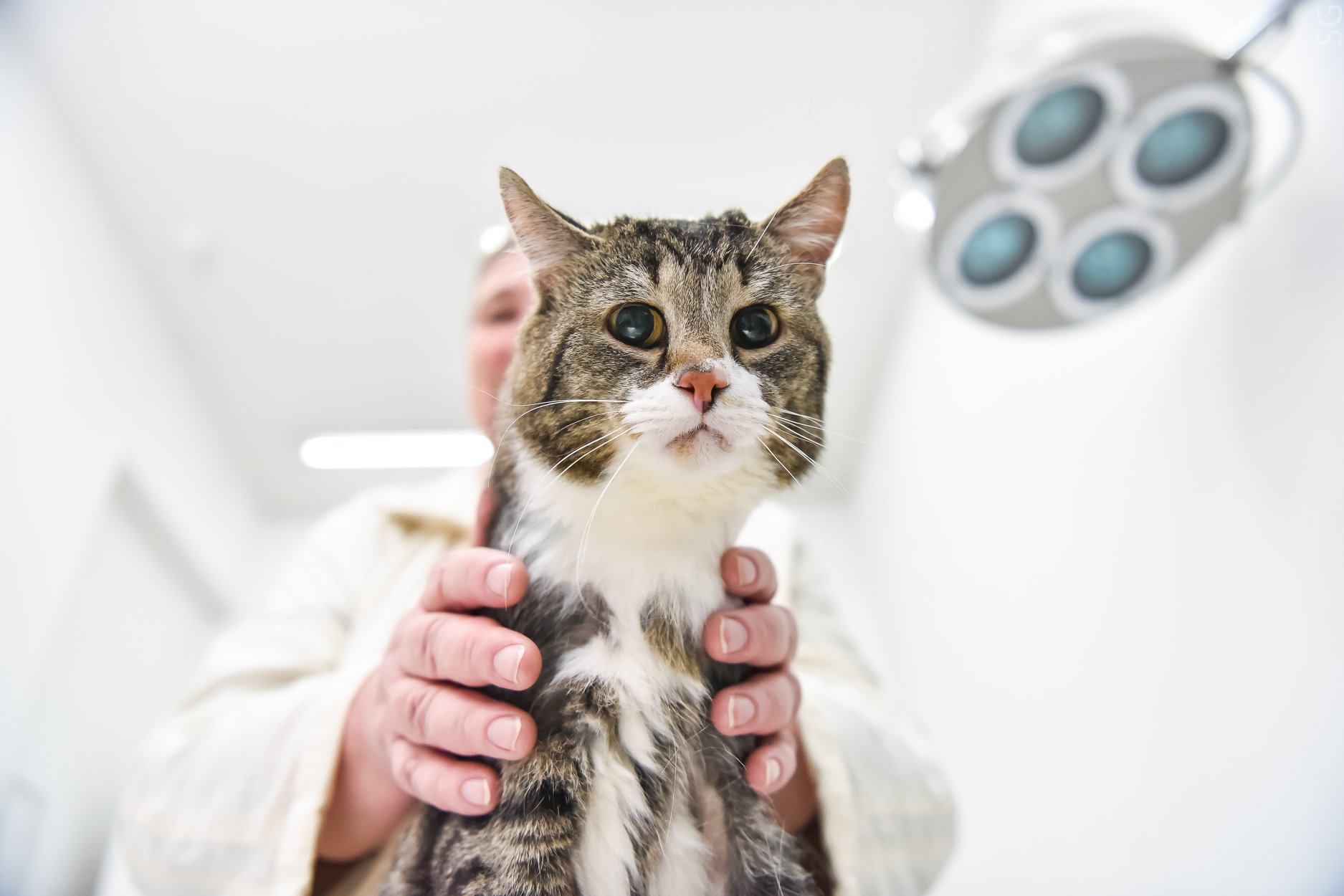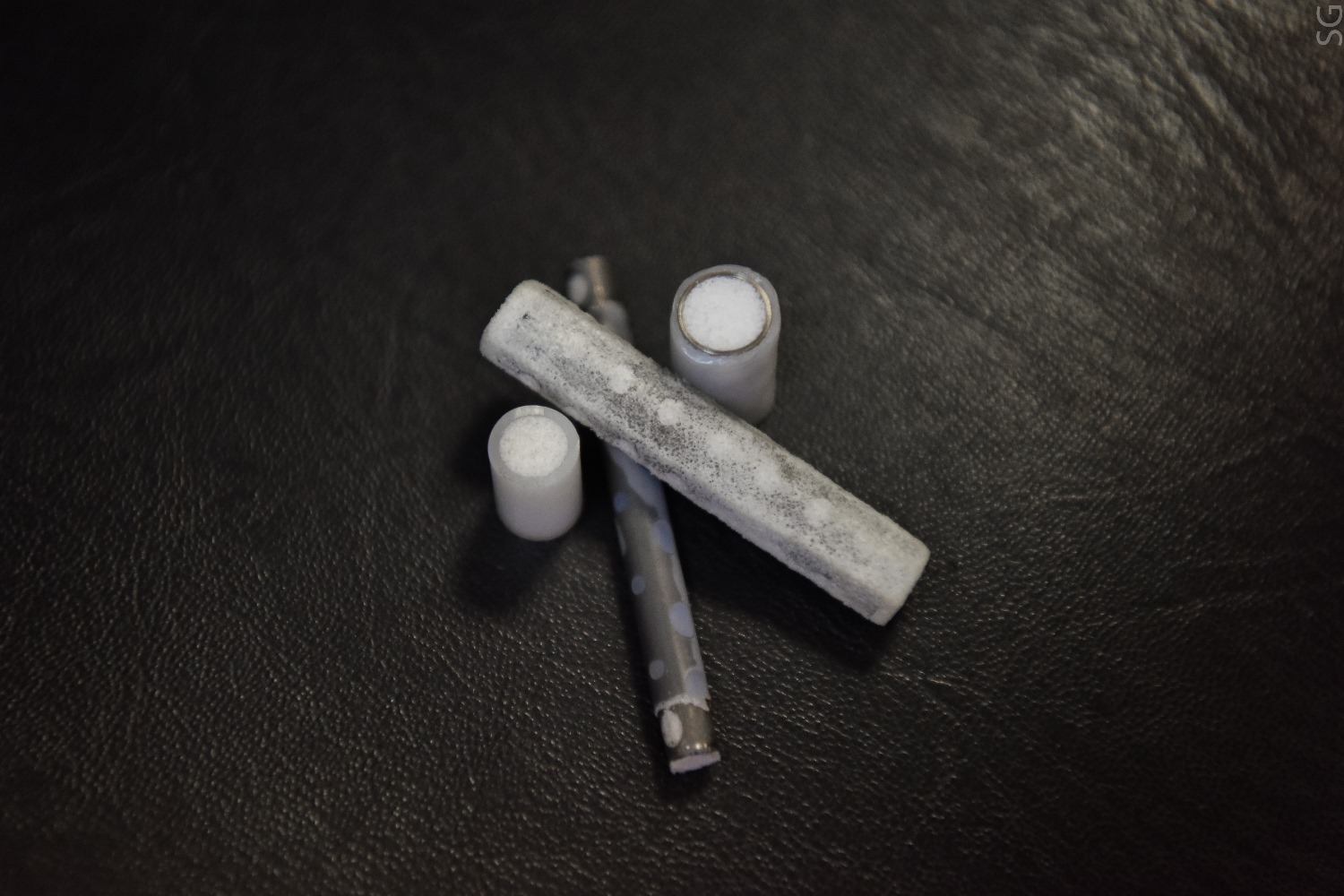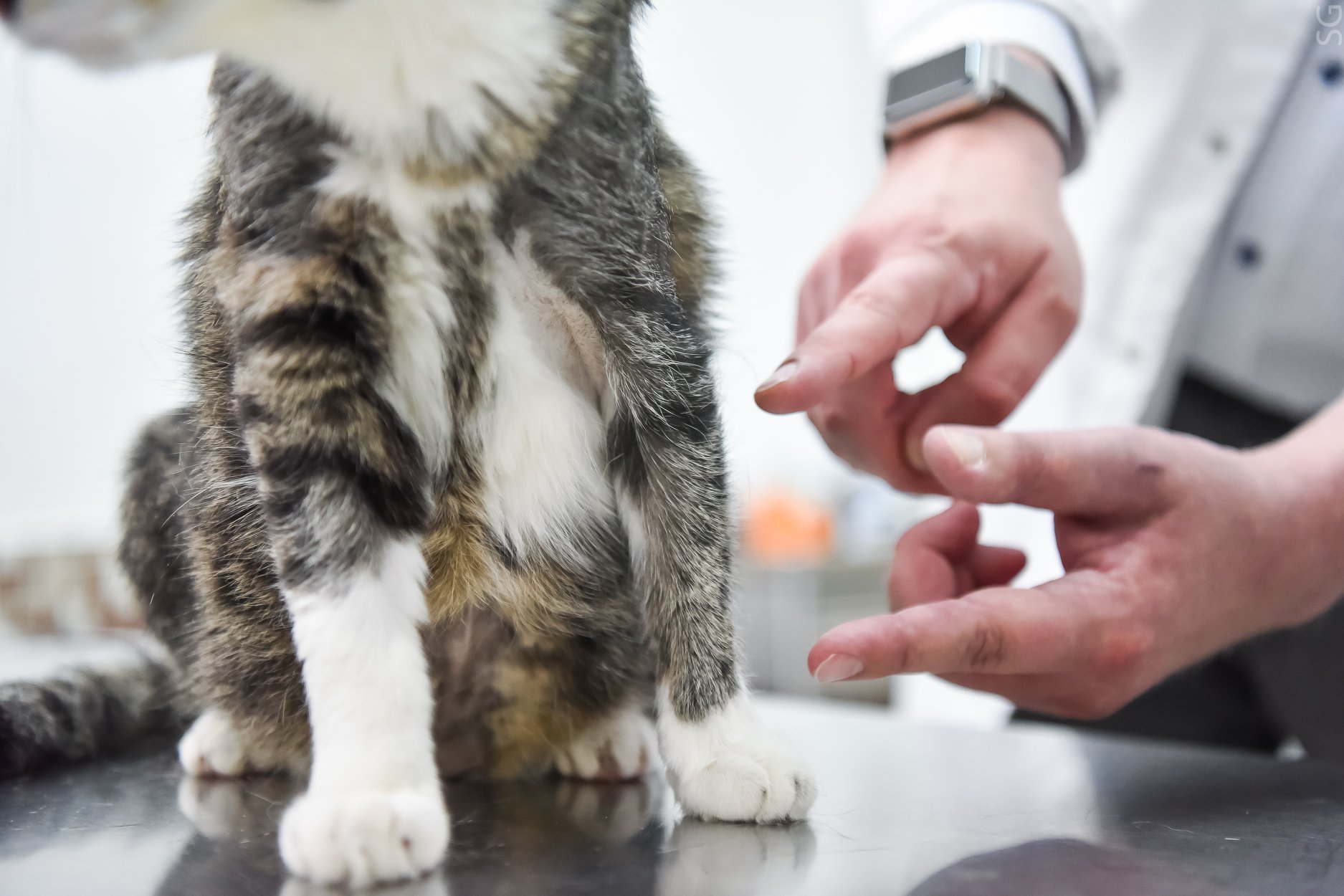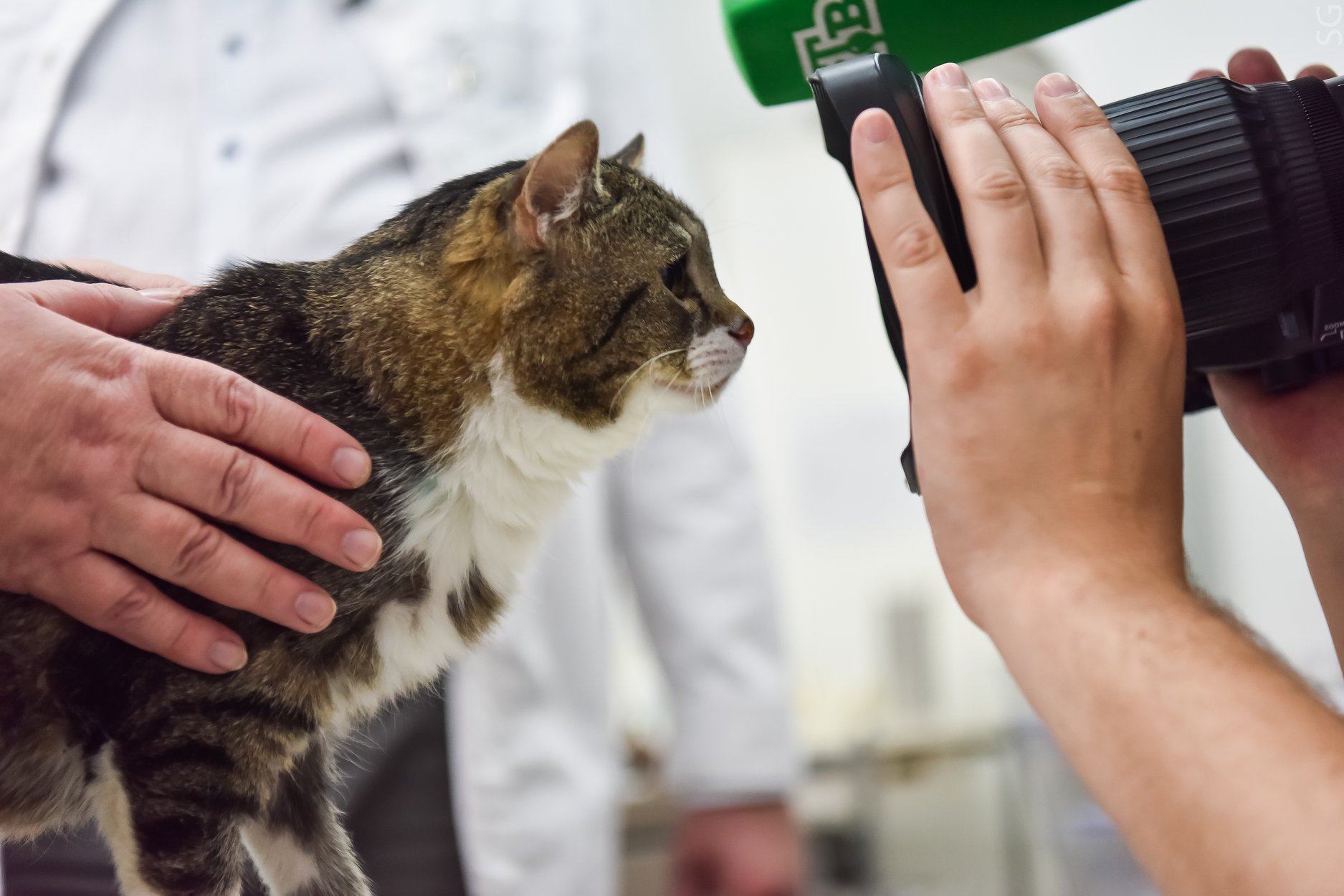How we treated the cat Lapun
The scientific team of a small innovative enterprise (MIP) "Biomimetiks", created by young scientists of NITU "MISiS" on the basis of the university, together with colleagues from the NMIC oncology. N.N. Blokhin created a unique hybrid implant to replace the affected bone area.
An implant completely imitating the bone structure was implanted in the Biocontrol veterinary clinic of a 14-year-old domestic cat, Lapune, with osteosarcoma. According to postoperative observations, the implant has settled down, the dynamics of recovery of the patient's mustache is positive.

')
Young scientists from MIP Biomimetiks, working on the basis of NIT MISiS, have been developing biocompatible bone implants based on ultrahigh molecular weight polyethylene (UHMWPE) for several years. The core of the hybrid implant is made of porous ultra-high molecular weight polyethylene, and the frame is printed on a 3D printer made of titanium alloy. Such a structure is a complete copy of the structure of a real bone, where porous UHMWPE corresponds to the inner, trabecular, part, and titanium alloy with a layer of continuous UHMWPE - solid outer, cortical.

Implant samples
In March-April 2019, the implant was implanted into a domestic cat named Lapunya after the removal of a 6-centimeter portion of the bone of the forepaw affected by osteosarcoma. In cooperation with the N.N. Blokhin developed a cell-engineering construct: the specialists of Biomimetiks LLC produced an implant, and their colleagues from the laboratory of cellular immunity populated it with cells isolated from the patient's bone marrow to accelerate implant implantation. The operation was carried out by biocontrol veterinary surgeons.

"The implant is standing here."
“The uniqueness of our development lies in the fact that, according to its characteristics, the implant almost completely corresponds to a normal bone. First of all, this means that it will not take on an excessive load, which means that the bone at the site of its attachment will not be embrittled, as is often the case with metal implants. In addition, the polymer surface of the implant is conveniently populated with the patient’s own cells, which significantly accelerates survival. This is especially important given the fact that pets, unlike people, cannot be explained that the limb should be protected for the time of recovery , ”says the Director General of Biomimetiks LLC, a researcher at the Center for Composite Materials NITU MISiS .-mn. Fedor Senates .

Lapunya on the set
According to postoperative observations for June 2019, the implant got accustomed, the recovery dynamics is positive, the cat moves independently. Thus, the implantation of such a hybrid cell-engineering implant becomes a good alternative to traditional radical treatment - amputation, and also much more difficult in terms of survival of metal implants.

Sterile titanium blanks for implants
The successful operation made by Lapune marks the end of the tests of the hybrid material in vivo, in laboratory animals, and the transition to the next stage - application in veterinary medicine. Before the use of an innovative implant in the treatment of humans, at least 3-4 years more clinical trials and technological modifications should take place.

The process of obtaining a polyethylene fine structure - loading into a planetary mill.
It should be noted that such a research area, as biomedical materials, in recent years has become one of the main directions of the development of university science in NITU "MISiS". If earlier materials scientists and biologists worked in conjunction quite rarely, today two sciences are beginning to interact more and more actively, forming a new interdisciplinary field. It is no coincidence that biomaterial science (along with quantum materials science and additive technologies ) became one of the three most promising scientific areas selected for participation in the new integrated iPhD curriculum , which we launched this year. Fedor Senates, by the way, is one of the leaders of the biomedical direction iPhD.

The process of settling implants in patient cells
The essence of this program is that we combine the master's program with graduate school, and the educational component with the scientific one. From the very beginning and all five years, the student is not at the level of the notorious “coursework”, but “in an adult way” develops his scientific theme, the scientific and educational track is formed individually for each student in accordance with his scientific problems. At the same time, the university guarantees the ability to conduct research in a modern laboratory with advanced equipment and scientific guidance from a serious acting scientist. You can apply for training until July 20.

Lapunya - TV star!
Information about the scientist:
Fedor Senatov - Ph.D. in Physics and Mathematics, Research Fellow at the Center for Composite Materials, NITU MISiS, General Director of Biomimetiks LLC.
For more than 5 years Fedor and his colleagues have been working on biomimetic bone and cartilage implants and endoprostheses, including hybrid implants combining metal and polymer or two polymers with different characteristics.

Fedor Senatov with his team
Earlier we wrote on Habré about the developments of Fedor and his team. For example, here we talked about an implant of two modifications of ultrahigh molecular weight polyethylene, here about technology that will reduce animal testing during the testing of endoprostheses, and here we have shown how strong one of the materials scientists are working with.
NTV plot about Lapun (from 08:46):
An implant completely imitating the bone structure was implanted in the Biocontrol veterinary clinic of a 14-year-old domestic cat, Lapune, with osteosarcoma. According to postoperative observations, the implant has settled down, the dynamics of recovery of the patient's mustache is positive.

')
Young scientists from MIP Biomimetiks, working on the basis of NIT MISiS, have been developing biocompatible bone implants based on ultrahigh molecular weight polyethylene (UHMWPE) for several years. The core of the hybrid implant is made of porous ultra-high molecular weight polyethylene, and the frame is printed on a 3D printer made of titanium alloy. Such a structure is a complete copy of the structure of a real bone, where porous UHMWPE corresponds to the inner, trabecular, part, and titanium alloy with a layer of continuous UHMWPE - solid outer, cortical.

Implant samples
In March-April 2019, the implant was implanted into a domestic cat named Lapunya after the removal of a 6-centimeter portion of the bone of the forepaw affected by osteosarcoma. In cooperation with the N.N. Blokhin developed a cell-engineering construct: the specialists of Biomimetiks LLC produced an implant, and their colleagues from the laboratory of cellular immunity populated it with cells isolated from the patient's bone marrow to accelerate implant implantation. The operation was carried out by biocontrol veterinary surgeons.

"The implant is standing here."
“The uniqueness of our development lies in the fact that, according to its characteristics, the implant almost completely corresponds to a normal bone. First of all, this means that it will not take on an excessive load, which means that the bone at the site of its attachment will not be embrittled, as is often the case with metal implants. In addition, the polymer surface of the implant is conveniently populated with the patient’s own cells, which significantly accelerates survival. This is especially important given the fact that pets, unlike people, cannot be explained that the limb should be protected for the time of recovery , ”says the Director General of Biomimetiks LLC, a researcher at the Center for Composite Materials NITU MISiS .-mn. Fedor Senates .

Lapunya on the set
According to postoperative observations for June 2019, the implant got accustomed, the recovery dynamics is positive, the cat moves independently. Thus, the implantation of such a hybrid cell-engineering implant becomes a good alternative to traditional radical treatment - amputation, and also much more difficult in terms of survival of metal implants.

Sterile titanium blanks for implants
The successful operation made by Lapune marks the end of the tests of the hybrid material in vivo, in laboratory animals, and the transition to the next stage - application in veterinary medicine. Before the use of an innovative implant in the treatment of humans, at least 3-4 years more clinical trials and technological modifications should take place.

The process of obtaining a polyethylene fine structure - loading into a planetary mill.
It should be noted that such a research area, as biomedical materials, in recent years has become one of the main directions of the development of university science in NITU "MISiS". If earlier materials scientists and biologists worked in conjunction quite rarely, today two sciences are beginning to interact more and more actively, forming a new interdisciplinary field. It is no coincidence that biomaterial science (along with quantum materials science and additive technologies ) became one of the three most promising scientific areas selected for participation in the new integrated iPhD curriculum , which we launched this year. Fedor Senates, by the way, is one of the leaders of the biomedical direction iPhD.

The process of settling implants in patient cells
The essence of this program is that we combine the master's program with graduate school, and the educational component with the scientific one. From the very beginning and all five years, the student is not at the level of the notorious “coursework”, but “in an adult way” develops his scientific theme, the scientific and educational track is formed individually for each student in accordance with his scientific problems. At the same time, the university guarantees the ability to conduct research in a modern laboratory with advanced equipment and scientific guidance from a serious acting scientist. You can apply for training until July 20.

Lapunya - TV star!
Information about the scientist:
Fedor Senatov - Ph.D. in Physics and Mathematics, Research Fellow at the Center for Composite Materials, NITU MISiS, General Director of Biomimetiks LLC.
For more than 5 years Fedor and his colleagues have been working on biomimetic bone and cartilage implants and endoprostheses, including hybrid implants combining metal and polymer or two polymers with different characteristics.

Fedor Senatov with his team
Earlier we wrote on Habré about the developments of Fedor and his team. For example, here we talked about an implant of two modifications of ultrahigh molecular weight polyethylene, here about technology that will reduce animal testing during the testing of endoprostheses, and here we have shown how strong one of the materials scientists are working with.
NTV plot about Lapun (from 08:46):
Source: https://habr.com/ru/post/459806/
All Articles